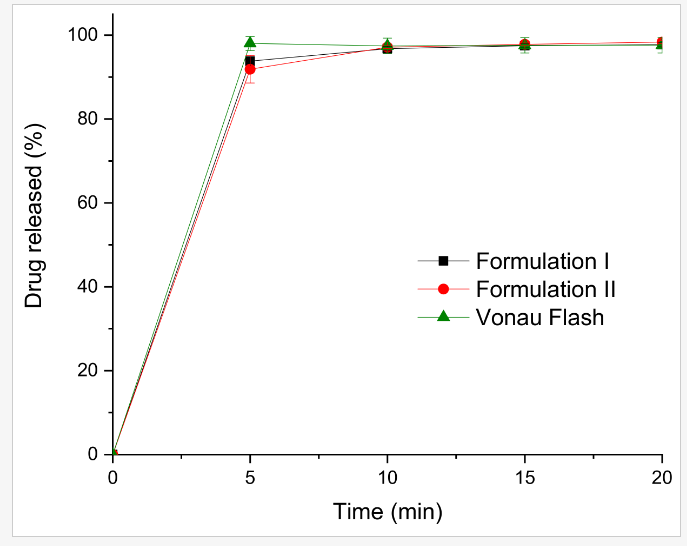International researchers are delving further into the manufacturing of patient-specific medications, outlining their findings in ‘Selective Laser Sintering 3D Printing of Orally Disintegrating Printlets Containing Ondansetron.’ Experimenting with a new type of tablet, the authors found that they were able to make a product similar to commercially manufactured pills used for treating cancer.
A pill meant to prevent vomiting in cancer patients, ondansetron is prescribed for patients suffering from nausea due to chemotherapy and radiation. 3D printed pharmaceuticals, while exhibiting enormous potential for positive benefits, may not be making the rapid speed progress expected due to numerous challenges—despite ongoing studies regarding methods for creating more effective medication.
3D printed pills, however, can offer incredible advantages for patients, and especially in the case of ondansetron which can have side effects like life-threatening arrhythmia; however, with patient-specific medications, ‘vulnerable’ patients who may be suffering from diseases like cancer, are more protected. With the addition of SLS 3D printing, a variety of items related to pharmaceuticals are already being fabricated, to include:
- Printlets
- Miniprintlets
- Drug delivery lattice structures
- Drug delivery devices
- Formulations for quick dose verification
Orally disintegrating tablets (ODTs) are also a possibility for SLS 3D printing—in the hopes that the process could be substantially improved over current, conventional methods that are expensive and often overly complex.
In this study, the researchers developed a new type of ondansetron-cyclodextrin complexes meant to disintegrate rapidly. Upon analysis of two different types of 3D printed samples, they were compared to Vonau® Flash 8 mg, a commercial example of ondansetron.
The samples (cylindrical, and yellow) were printed in batches of six, leaving the researchers to measure diameter and thickness, determination of mechanical properties via breaking force of each printlet, and examine internal structures, density, and porosity shown in X-ray form.
Both samples printed for the study displayed fast disintegration of ~15 s, releasing over 90 percent of the drugs, in five minutes ‘independent of mannitol content.’
“Although a small part of the drug may be not incorporated into the cyclodextrin, drug-cyclodextrin complexes may be formed “in situ” in the mouth facilitated by the saliva as a solvent,” stated the researchers.
“The DSC data of the formulations before and after printing showed a sharp endothermic peak at around 168 °C which corresponds to the melting point of the mannitol. The absence of the endothermic peak corresponding to the melting point of the ondansetron indicates that the drug is in the amorphous form within the formulations or that the drug percentage is so low that the crystals (if any) are not detected using DSC.”
Data was evaluated with a CT analyzer, density was displayed with different colors, and porosity was measured through the morphometry preview consisting of 100 layers to be assessed at the top, middle, and bottom of the printlets. Success in the project left the research team to note:
“The opportunity to manufacture this drug product in an automatic manner close to the point of dispensing opens new opportunities in the implementation of personalized medicine as there is the need for automatic, cost-effective and reliable systems to prepare oral medicines personalized to the individual.”
What do you think of this news? Let us know your thoughts! Join the discussion of this and other 3D printing topics at 3DPrintBoard.com.
[Source / Images: ‘Selective Laser Sintering 3D Printing of Orally Disintegrating Printlets Containing Ondansetron’]Subscribe to Our Email Newsletter
Stay up-to-date on all the latest news from the 3D printing industry and receive information and offers from third party vendors.
You May Also Like
Precision at the Microscale: UK Researchers Advance Medical Devices with BMF’s 3D Printing Tech
University of Nottingham researchers are using Boston Micro Fabrication‘s (BMF) 3D printing technology to develop medical devices that improve compatibility with human tissue. Funded by a UK grant, this project...
3D Printing Webinar and Event Roundup: April 21, 2024
It’s another busy week of webinars and events, starting with Hannover Messe in Germany and continuing with Metalcasting Congress, Chinaplas, TechBlick’s Innovation Festival, and more. Stratasys continues its advanced training...
3D Printing Webinar and Event Roundup: March 17, 2024
It’s another busy week of webinars and events, including SALMED 2024 and AM Forum in Berlin. Stratasys continues its in-person training and is offering two webinars, ASTM is holding a...
3D Printed Micro Antenna is 15% Smaller and 6X Lighter
Horizon Microtechnologies has achieved success in creating a high-frequency D-Band horn antenna through micro 3D printing. However, this achievement did not rely solely on 3D printing; it involved a combination...

































